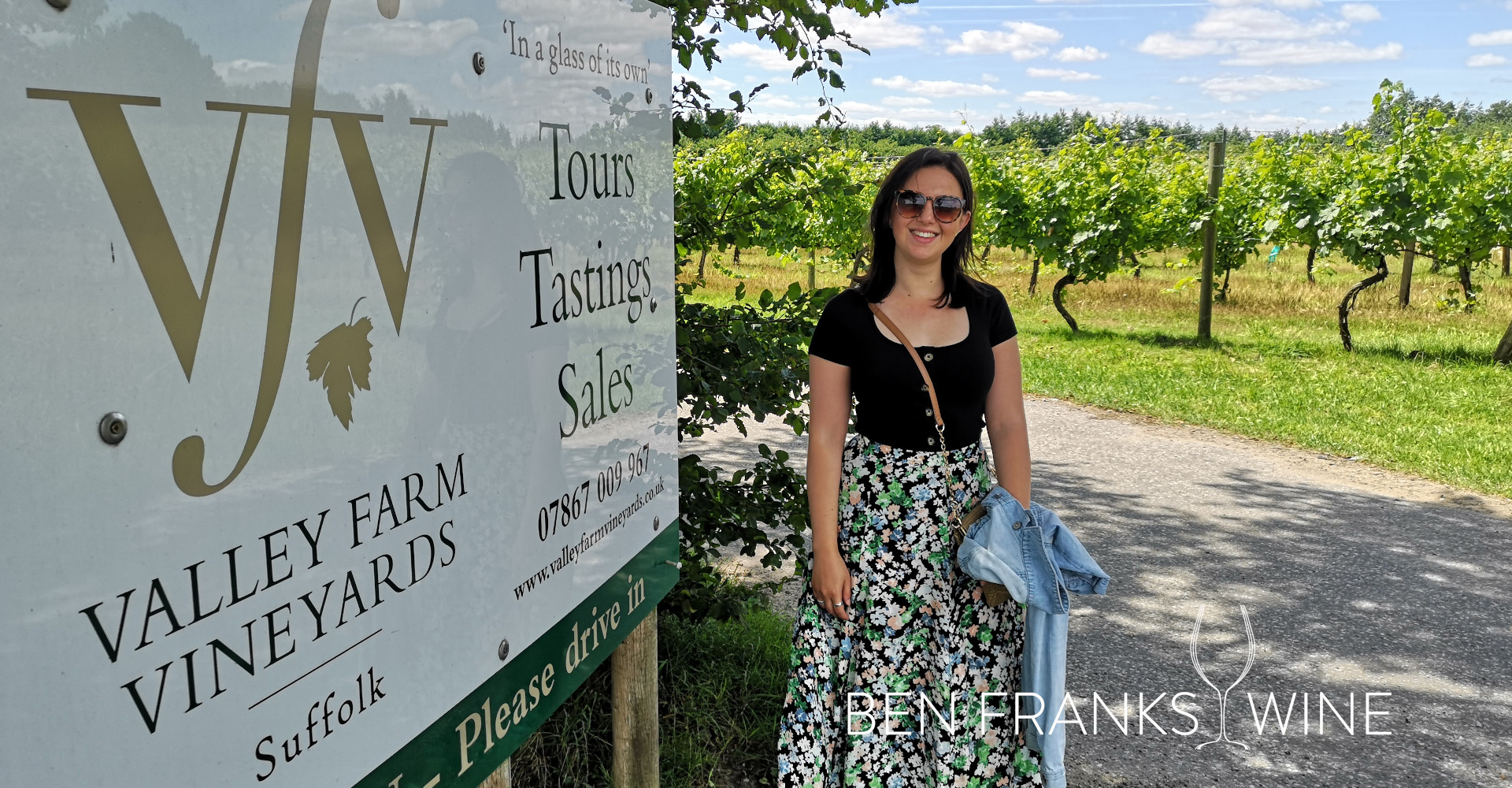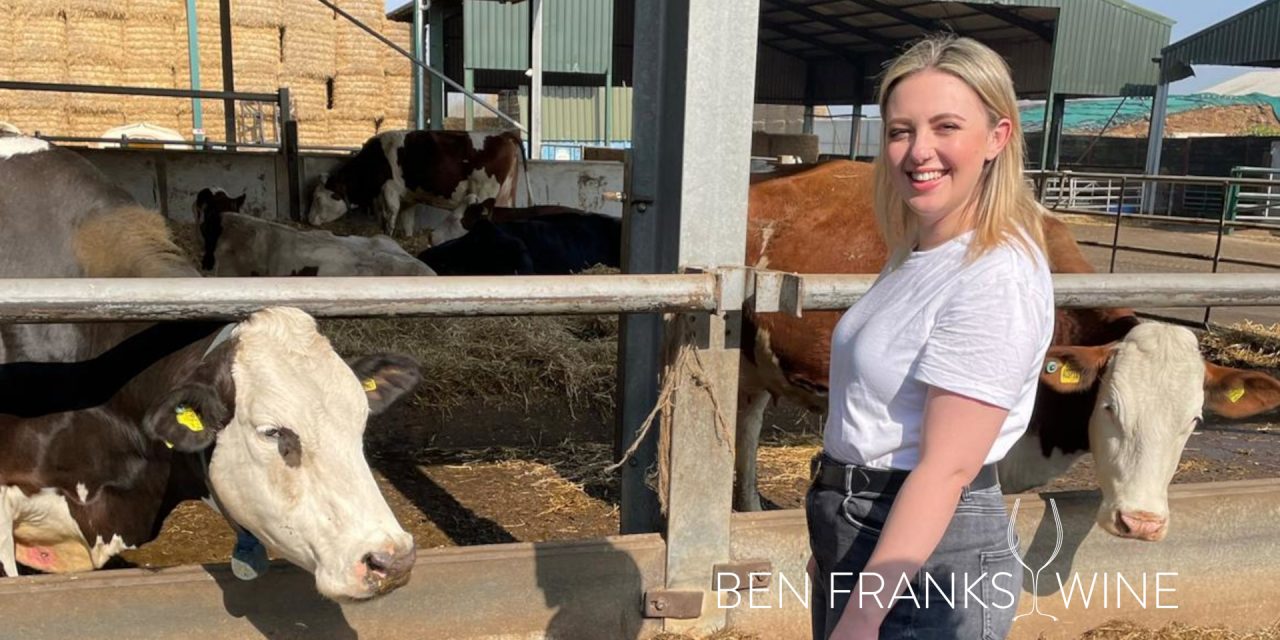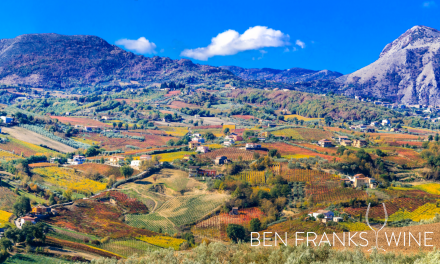Cheese and wine connoisseur Jessica Summer shares the very best English wine and British cheese pairings that would rival France, the homeland of cheesemaking. Discover Jessica’s top combinations to try and read her insights into how English wines can use cheese pairings to promote their local kudos and sell more award-winning wines.
Last month the UK celebrated National Cheese and Wine Day, an opportunity to indulge in one’s favourite cheese and wine in unison. This, of course, is something I do fairly regularly. From my experience, if you asked the average person to create a cheeseboard, they would probably head down to their local supermarket and gather a medley of familiar favourites like Le Rustique Brie/Camembert, Cathedral City Cheddar, and Stilton, followed by some Manchego or goat’s cheese. The natural inclination would be to opt for a generic, fuller-bodied red wine to complement these choices. While this approach may sound practical, it’s not necessarily the most exciting or accurate way to pair cheese and wine.
When it comes to the art of pairing cheese and wine, an age-old rule holds true: “what goes together grows together.” This concept embraces the intrinsic connection between food and wine, drawing upon the unique characteristics of the local terroir. In times of old, long before the era of global trade and mass imports, winemakers crafted their wines to complement the regional cuisine. Embracing this culinary heritage, why not venture into creating uniquely British cheese and wine pairings that resonate with our own gastronomic traditions? Britain’s growing reputation of producing world-class wines and cheeses opens exciting avenues to explore novel regional pairings that will surprise and delight.
Contrary to common belief, red wine does not always make the best companion for cheese. There is a world of different artisan cheese waiting to be discovered and these cheeses have varying flavour profiles, textures, strength and aromas. The UK itself boasts an astonishing 750 different varieties compared to France’s 400. Yes, you heard that right – more artisan cheese varieties are crafted in the UK than in the very heartland of cheese, France itself. Now, let’s not discredit the French; they are renowned for their exceptional cheese and wine-making skills. When you combine some of their regional classics, like Délice de Bourgogne with Macon, Touraine Sauvignon Blanc with Saint Maure De Touraine, or Saint Nectaire with Gamay, you get something truly magical. The unique terroir of each region is expressed in the cheese and wine, weaving together a fascinating story of their origin. Terroir refers to how the environment, including soil, climate, and other natural factors, influences the taste and characteristics of cheese and wine. It gives them a distinct sense of place and identity.
The British wine scene is experiencing a remarkable surge in popularity, particularly in the realm of sparkling wines. A stroll down the supermarket aisle now reveals a growing selection of English wines, a testament to the flourishing market for sparkling varieties in the UK.
This growth in production and sales has been evident in recent years, with sparkling wines taking the lead in winning awards and recognition. Having had the opportunity to judge at the Independent English Wine Awards earlier this year, I can personally vouch for the impressive quality of the sparkling wines being produced. However, it is fair to acknowledge that the still wine category still has room for improvement. The International Wine & Spirit Competition (IWSC) awards for 2023 further solidify the position of England as a force to be reckoned with in the wine industry, as an astonishing 79% of the medals awarded to English wine were granted to sparkling wines. A remarkable 30 British Vineyards have also been recognised and celebrated for their contributions to the world of wine.
In a similar vein, English cheeses have been causing quite a stir on the international stage. At the World Cheese Awards 2022 British cheeses “achieved an impressive tally of 148 awards, including an outstanding 11 Super Gold, 24 Gold, 56 Silver, and 57 Bronze accolades”.
So I’ve put some of these award winning components together to create regional British cheese and wine pairings that can rival their French counterparts:
Hampshire
Hampshire’s temperate maritime climate and diverse soils, including chalky soils, create favourable conditions for growing grape varieties like Chardonnay, Pinot Noir, and Pinot Meunier used in sparkling wine production. Vineyards to look out for from this region are: Hambledon, Hattingley and Black Chalk.

Jessica at Hambledon.
The region’s agricultural traditions and local expertise, combined with its nutrient-rich pastures, make it ideal for grazing, contributing to high-quality milk from the region’s dairy cows for the production of excellent cheeses, complementing the unique terroir of Hampshire such as Hampshire Cheese Co Tunworth and Winslade and Lyburn Farm Old Winchester and Stoney Cross.
My Top Hampshire combination:
Hampshire Cheese Co Winslade and Hambledon Classic Cuvée:
This award-winning sparkling wine is vibrant, creamy, yeasty and fresh. It has the quintessentially British characteristics of blossom aromas and Granny Smith apple flavours. The palate is undeniably refreshing with crisp acidity. Winslade is a rich and silky-smooth cheese. Its gooey paste is encased by a band of spruce that imparts a delicate, woody aroma. The flavour is full, fruity and complex but never overpowering with a quiet, floral earthiness. It is a decidedly refined cheese, made in Hampshire, England with finesse.The high fat content in the brie coats your mouth in creamy goodness and then the ultra-fine bubbles of the sparkling wine cleanse the palate and set you up for another bite! (You can find this combination in the Mouse & Grape Nancy Hamper which celebrates British cheese and wine combinations)
Suffolk & Norfolk
Suffolk’s unique terroir, located in the eastern part of England, combines several factors that contribute to its potential for producing exceptional wine and cheese. Influenced by its proximity to the coast and the North Sea, Suffolk experiences a temperate maritime climate with mild summers and cool winters, providing an extended grape growing season and gradual ripening essential for high-quality wines. Wines I like come from Shawsgate and Valley Farm and Flint Vineyard in neighbouring Norfolk.

Jessica visits Valley Farm Vineyards.
The region’s diverse soils, ranging from sandy to loamy and clay, accommodate various grape varieties, each adding distinct characteristics to the wines. Combined with the skill of local cheesemakers, this fertile landscape yields a variety of top-notch cheeses that authentically reflect the region’s flavours imparted by its soil and vegetation. Favourites of mine are Fen Farm Dairy Baron Bigod and St Jude made by Julie Cheyney also made at Fen Farm.
My Top Suffolk combination:
Fen Farm Dairy Baron Bigod and Flint Vineyard Charmat Rosé 2022:
A stunning brie-style cheese, with a rich, full, earthy flavour and a lingering finish. It’s made by Jonny Crickmore from the milk of his own herd of Montbeliarde cows in Suffolk. Paired with Flint Charmat Rosé, “made using the Charmat method that requires secondary fermentation in tank rather than bottle”. beautiful pink hues and lifted fruit aromas, the 2022 vintage exudes the essence of Summer Fruit Pudding, offering a rounder palate that compliments the creaminess of the cheese. The earthy flavour contrasts with the fruity cheese and brings out the wine’s strawberry and cream flavours.
Oxfordshire & Buckinghamshire
Oxfordshire and Buckinghamshire have diverse soil types, including limestone-rich soils in some areas, which offer excellent drainage for vineyards. Other parts have clay and loamy soils, suitable for different grape varieties. I am not as familiar with vineyards in this area, something I will change but I do recommend Hope & Harrow in Marlow. Both regions experience a temperate climate with moderate summers and mild winters, creating favourable conditions for grape cultivation and fertile pastures for grazing. My favourite cheeses made in this area include Nettlebed Creamery who make Bix, Highmore and Witheridge – all stunning cow’s milk cheeses in their own right and Norton and Yarrow who make the award-winning goat’s milk cheeses Sinodun Hill and Brightwell Ash.
My Top Oxfordshire/Buckinghamshire combination:
Nettlebed Creamery Bix with Hope & Harrow Blanc de Noirs 2018:
Though technically not from the same county, the vineyard and dairy are just 30 minutes apart and this irresistible combination simply couldn’t be overlooked. Nettlebed Creamery’s Bix, a soft cheese with a luxurious, evolving texture from crème fraiche to clotted cream, ultimately transforming into a creamy, rich delight. Paired perfectly with the superb brioche and berry-fresh English fizz from Henry Laithwaite’s trophy-winning Harrow & Hope, whose vineyard journey began in Marlow back in 2010, this ensemble embodies all the winning flavour elements of the classic British strawberries and cream – a truly quintessential English experience!
South Devon
The region’s milder winters and warmer summers allow for a longer grape-growing season, resulting in wines with distinctive regional characteristics. With a mix of sandy and clay soils, South Devon cultivates various grape varieties, while its nutrient-rich pastures support high-quality milk for cheese-making. Notable Vineyards in Devon include: Sandridge Barton home of Sharpham wines and Calancombe Estate. The skilled cheesemakers and fertile landscapes contribute to a variety of high-quality cheeses, reflecting the terroir’s influence and establishing South Devon’s reputation as a notable destination for wine and cheese enthusiasts seeking distinctive and outstanding products. My favourite cheeses from Devon are Quicke’s Cheese. I particularly like their goat’s milk cheddar and Sharpham Cheeses Ticklemore and Cremet.
My Top Devon Combination:
Sharpham Dart Valley Reserve with Sharpham Ticklemore
Sandridge Barton, the home of Sharpham wine, produces outstanding English wines just 9 miles away from Sharpham Dairy. Their ripe and fruit-driven white wine showcases stone fruit notes of white peach, while the rounded palate features sweet apricot and subtle spice. Pair it with Ticklemore Goat, a stark white cheese with a delicate texture and mellow, herbaceous flavour. This perfect pairing elevates the creamy character of the cheese and enhances the peach flavours in the wine, making it an ideal choice for a delightful summer indulgence.
Somerset
Somerset’s diverse soils consisting of clay, limestone, and loam offer various conditions for growing grape varieties, allowing for a wide range of flavour profiles in the wines. Local vineyards focus on Pinot Noir, Chardonnay, and Pinot Meunier, among others, crafting wines that thrive in the region’s climate and soil. Wines to buy from Somerset include Wraxall Vineyard and Oatley Vineyard. The region’s lush pastures and expertise in cheese-making yield high-quality cheeses that reflect the unique flavours of the local terroir. My favourite dairy in Somerset is White Lake Dairy. I wax lyrical about these cheeses so much I really should be in commission! You must try Rachel, Eve, Driftwood and Solstice to name but a few.

Jessica at Whitelake Dairy.
My Top Somerset Combination:
White Lake Dairy Driftwood with Wraxall Vineyard Bacchus:
To celebrate National Cheese and Wine Day, Mouse & Grape hosted an “Ask the Experts” series, where industry professionals shared their favourite combinations. Roger Longman from White Lake Dairy in Somerset recommended pairing the award-winning Driftwood with Wraxall Vineyard Bacchus. Driftwood, an ash-coated, young, fresh, and zesty goat’s milk cheese perfectly complements the wine’s elegant and aromatic nose, featuring fleshy stone fruits wrapped around a core of grapefruit zest. With a lovely richness from 20%-barrel fermentation in neutral oak, the wine is supported by a bright mineral core and a long, persistent finish. Together, this pairing beautifully accentuates the citrusy notes in the cheese, while the wine’s fruity qualities shine, creating a delightful symphony of flavours.
Time to grab the cheeseboard
So there you have it – five British regional cheese and wine pairings that deserve a place on every cheeseboard. By embracing our rich culinary heritage and exploring the unique terroir of each region, we can truly appreciate the magic that happens when cheese and wine come together. So, the next time you plan a cheese and wine gathering and want to follow the “what goes together grows together rule” don’t just go French and remember to explore the treasures of British cheese and wine too!
~
What’s your favourite cheeseboard? Let us know in the comments below.






